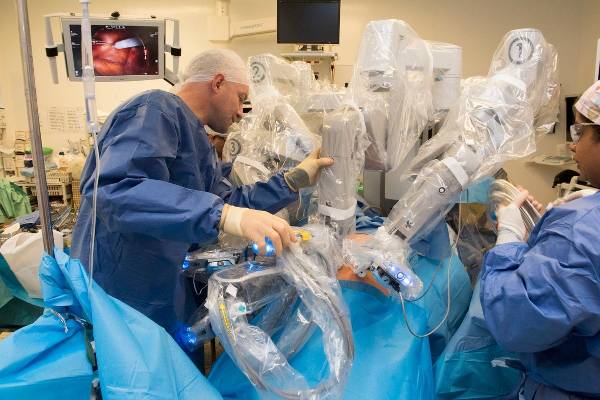There will be wear and tear in the form of diseases if you have a body. Diseases are harmful deviations from an organism’s normal functional state. Today, science has discovered many diseases that can affect humans, but before seeking a prostate cancer surgeon near me, you need first understand what prostate cancer is and in this article, we will discuss prostate cancer, one of the most deadly diseases that exist today.
About the Prostate Cancer
The prostate gland is a tiny walnut-shaped gland found in men’s pelvic. It’s right next to the bladder and can be checked with a digital rectal exam. Prostate cancer is a type of cancer that starts in the prostate gland and spreads throughout the body. According to the website Urology Care Foundation, in the United States, prostate cancer is the second greatest cause of cancer death in men. The prostate serves a variety of purposes. Producing the fluid that nourishes and transports sperm, secreting prostate-specific antigen (PSA), a protein that helps semen maintain its liquid condition, and assisting with urinary management are among these functions.
According to the website Medical News Today, prostate cancer affects about one in every eight men at some point in their lives. Only 1 in 41 of these people will die as a result. This is because treatment is effective, particularly in the early phases. Many occurrences of prostate cancer can be detected early on, thanks to routine screening.
Furthermore, growth in the prostate can be of two types that is benign prostatic hyperplasia (not cancer) and malignant (cancer). Benign prostatic hyperplasia has some characteristics such as
- Are rarely life-threatening and don’t encroach on their tissues.
- It cannot spread to other regions of the body and can be removed. It can grow back slowly (although not commonly).
Whereas the malignant characteristics are as follows:
- Occasionally poses a hazard to life and it may spread to surrounding organs and tissues (such as the bladder or rectum)
- Can spread to other places of the body (like lymph nodes or bone) and often, they can be eliminated, but they can also regrow.
The male reproductive system includes the prostate and seminal vesicles. The prostate and seminal vesicles’ primary function is to produce fluid to bathe sperm. Sperm is produced in the testicles and then transported to the urethra during ejaculation. Fluid from the prostate and seminal vesicles also travels into the urethra at the same time. The ejaculate is a mixture of semen and fluid from the prostate and seminal vesicles that exits the penis through the urethra.
Symptoms of the Prostate Cancer
Prostate cancer frequently has no symptoms in its early stages, but screening can detect changes that could suggest cancer. A test to assess PSA levels in the blood is used in screening. High levels indicate the presence of malignancy. Prostate cancer symptoms (who do experience) are as follows:
- Loss of appetite and weight
- Pain in back, hips, pelvis, bones, etc.
- Urinating frequently and Urinary difficulty, pain, burning, or a weak urine flow
- Urine with blood (Hematuria)
- Ejaculation that hurts
- Tiredness
Risk associated with the Prostate Cancer
Nobody knows what causes prostate cancer or how it begins. Even though there is no known cause for prostate cancer, there are numerous dangers linked with it.
- The risk of prostate cancer increases as men get older. It is uncommon among men under the age of 40.
- Men who have a family history of prostate cancer are more likely to develop the disease themselves.
- According to studies, heavy smokers’ prostate cancer risk is doubled. Smoking has also been connected to an increased risk of prostate cancer death.
- Prostate cancer risk may be influenced by diet and lifestyle. It’s unclear how this will happen. More calories, animal fats, processed sugar, and a lack of fruits and vegetables may increase your risk.
Conclusion
I hope you found this article helpful; before searching for a prostate cancer surgeon near me in Clearwater, keep the factors described above in mind.

